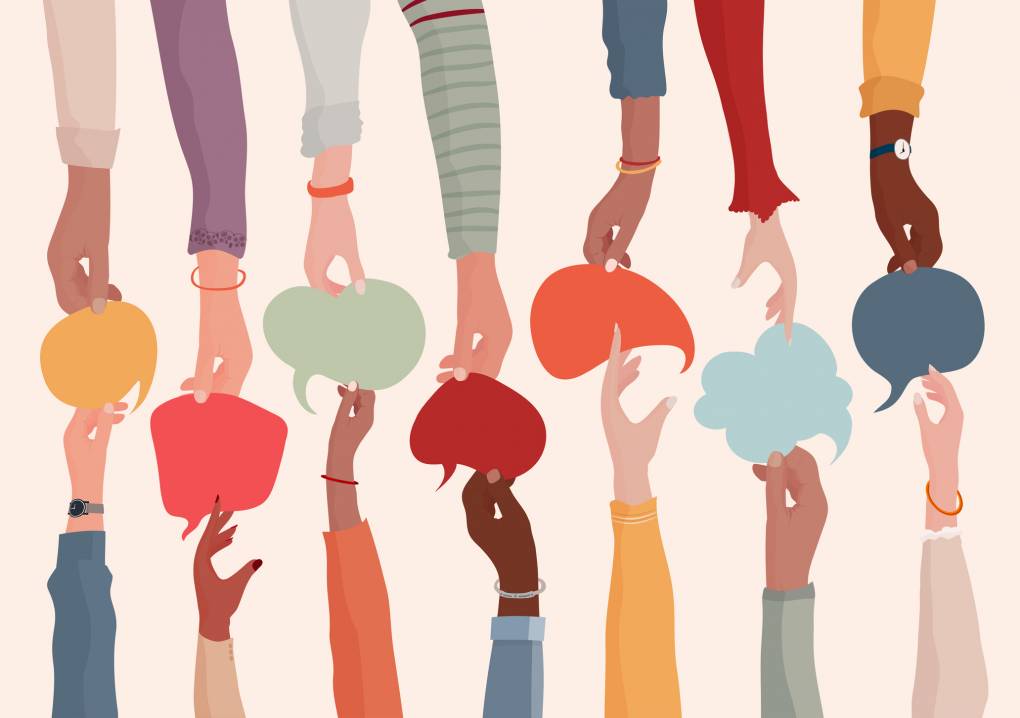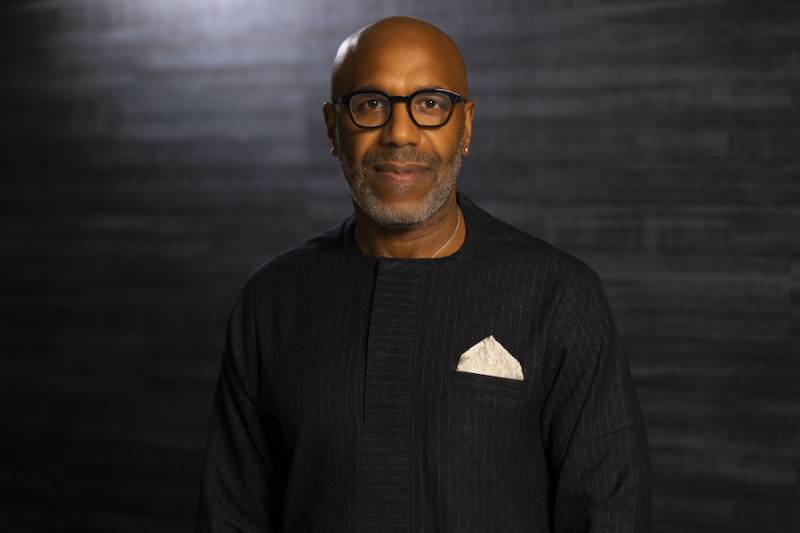
A Framework for Conversations About Race in Schools – MindShift
“Frequently when you go into the situation, the teachers are pretty stressed. There’s a heightened energy,” says Blandina.
In his role, Blandina noticed how race and bias affected student outcomes. As the sixth largest school district in the nation, Broward County contains 31 cities in Florida with students representing 170 different countries and speaking over one hundred languages.
“I’m an older white guy doing this work,” says Blandina. “There’s been a history of over-identifying Black students, Hispanic students – especially Black and Hispanic males – as having some sort of a learning or behavioral problem.” He’s referring to national data that shows Black, Latino and Native American students are disciplined more harshly than their white counterparts with higher rates of suspension, expulsion and referral to law enforcement.
This is in part because teachers in Broward County – and schools across the nation – don’t reflect the identities of the students they teach, according to Dan Gohl, Broward County’s Chief Academic Officer. There’s already a cultural difference between teachers – who are enforcing what they think is appropriate classroom behavior – and students, he says.
Singleton’s Courageous Conversation training aims to help educators have the tools they need to participate in generative conversations about race. Developing racial understanding and having interracial dialogue about race is the foundation of creating equitable changes in schools and can improve student achievement. He says normalizing generative conversations about race allows other important priorities to happen. “[It] allows us to enter into the space to develop the skills, knowledge and capacities that we need to be able to take on the challenges presented to us by race,” says Singleton.

The Courageous Conversation framework for talking about race can be boiled down to what he calls the protocol. It’s made up of three parts: the agreements, compass and conditions.
PART 1: AGREEMENTS
Before engaging in a courageous conversation about race, participants need to acknowledge and commit to practicing the four agreements.
- Stay engaged means participants will be “morally, emotionally, intellectually and socially involved in the dialogue” and will not check out of the conversation. It’s not unheard of for people to shut down when the topic of race comes up.
- Speak your truth is being completely honest about one’s thoughts, feelings and opinions. Participants will say what’s on their mind, not just what they think others want to hear.
- Experience discomfort ensures that participants might feel some distressing emotions. That’s normal. “Race was put into the human experience for less than noble purpose,” says Singleton about how race was created to assign value to certain people over others. And because of that, conversations about race are inherently uncomfortable.
- Expect and accept nonclosure means there are no quick fixes and these conversations will be ongoing. Singleton likens this last agreement to continuously painting the Golden Gate Bridge in order to keep it from getting rusty.
PART 2: THE COMPASS
The next part of the protocol is the compass, which helps people recognize the source and influences of their and others’ responses to conversations about race. The compass highlights four broad categories that people draw from to deal with racial information.
- Thinking is usually a tendency to look for more information or data. People who default to thinking tend to personally disconnect from the subject of race or constantly require more evidence to justify its importance.
- Believing is where one tries to figure out the rightness or wrongness of a racial issue based on the values or systems in which they were raised.
- Doing is a desire to respond with behaviors or action, which may include performative gestures of solidarity. People in the doing quadrant want to have next steps or get something done when they are faced with a racial issue, which can sidestep deeper structural issues.
- Feeling is an impulse to respond through emotions like anger, defensiveness or sadness. When racial information comes up, it triggers people in the feelings category to have an internal reaction.
PART 3: CONDITIONS
The final part of the protocol are the conditions, which are six conditions organized into three sequential tiers. The conditions ”guide participants through what they are supposed to talk about and what they need to be mindful of during the interracial dialogue.”
Engage: The first tier is focused on personalizing race as it pertains to the individual’s experience and not getting sidetracked by anyone else’s experience. “I’m not talking about Prince Harry and Meghan Markle right now, but talking about my experiences,” Singleton says.
One of the activities educators can do to practice personalizing race is a racial autobiography. “It makes you think about when you really become first aware that you are the race you are. How does that impact you? And how has that shaped your life going forward?” says Colton Griffith, a fourth grade teacher at a Broward County school. “I came out of it knowing myself better.”
Sustain: The next tier is about surfacing as many perspectives as possible to fuel the conversation. “You want to organize and get into conversation with people who don’t necessarily share your beliefs or your feelings or your thinking,” says Singleton. The challenge in this tier is to prevent living in an echo chamber and hear multiple perspectives without a need to judge or place agreement or disagreement.
Deepen: After completing the engage and sustain tiers, the last step focuses on expanding one’s understanding about race and identifying meaningful next steps. “Then we get to the deep end and we’re really talking about race as a system of power and we’re talking about how that power plays out and what is my relationship – and all of us have a relationship – to race as a system of power,” says Singleton.
Deepening Racial Understanding to Transform Teaching
For behavior specialist and autism coach Gary Blandina, the Courageous Conversations course transformed the way he talked about race with other teachers and administrators. For example, he’s changed the way he writes behavioral assessments after he’s called in by teachers to observe students. He uses what he calls “non-judgemental language” that excludes the use of adjectives.
“Because adjectives, while they add color to a great piece of literature, when you are describing a human being and what they’re doing or saying, adjectives betray your attitude towards that person,” according to Blandina.
For example, when he was called in to observe a young Black girl whose teacher said had “behavioral issues,” Blandina drew on what he learned from Courageous Conversations and brought an awareness that he didn’t have before.
“She looked fine; she was on point; she was answering. She was squirming in her chair, but that’s not a crime,” says Blandina. “Behavior is communication. There’s a reason the student is behaving that way and we might not have uncovered that reason. And so even in a situation like that, I’ve developed a mindset that I’m going to go in to understand.”
For fourth grade teacher Colton Griffith, the training emboldened him to reexamine his class curriculum when learning about Florida Native Americans. “We got to compare the resources that our district uses to talk about what happened to them and then go directly to a similar website where we can see their version of the history,” he said. While the textbook treated Native American history as the past, learning directly from the source helped them have a better understanding of race at this moment. “And that it’s not that something happened, it’s that they’re still here.”
Participating in the course enabled these teachers to connect their personal racial experiences to how race shows up in school settings. Now instead of cringing when race comes up, they feel prepared to be a part of the discussion. Since starting Courageous Conversations, Broward County has seen increased literacy for third grade students, which is a key academic benchmark, and decreased discipline disparities. While Dan Gohl says they do not credit these changes to any one program, they acknowledge that participating in the course sparked needed discussion in the district.
“I think it responded to a hunger that was in our community,” says Gohl. “What Courageous Conversations was able to do was to give us a structured process and common language.”
Despite this training, no one is perfect. This past Juneteenth, the county had to correct a mistake they made in connection to the holiday, which, as Singleton would say, is part of the ongoing work.
.@browardschools understandably wants to educate the community about Juneteenth, our new federal holiday. Unfortunately it did so with info they now admit was factually inaccurate. Parent @adamrherman identified the errors. @KatherineKoch told him info has been changed. pic.twitter.com/ktByjAfm4l
— Scott Travis (@smtravis) June 25, 2021
Listen to this episode of the MindShift Podcast for more information on how an entire district got on board with using Courageous Conversations about Race. And download the PDF here to follow along with each part of the protocol.
Stay connected with us on social media platform for instant update click here to join our Twitter, & Facebook
We are now on Telegram. Click here to join our channel (@TechiUpdate) and stay updated with the latest Technology headlines.
For all the latest Education News Click Here
For the latest news and updates, follow us on Google News.

